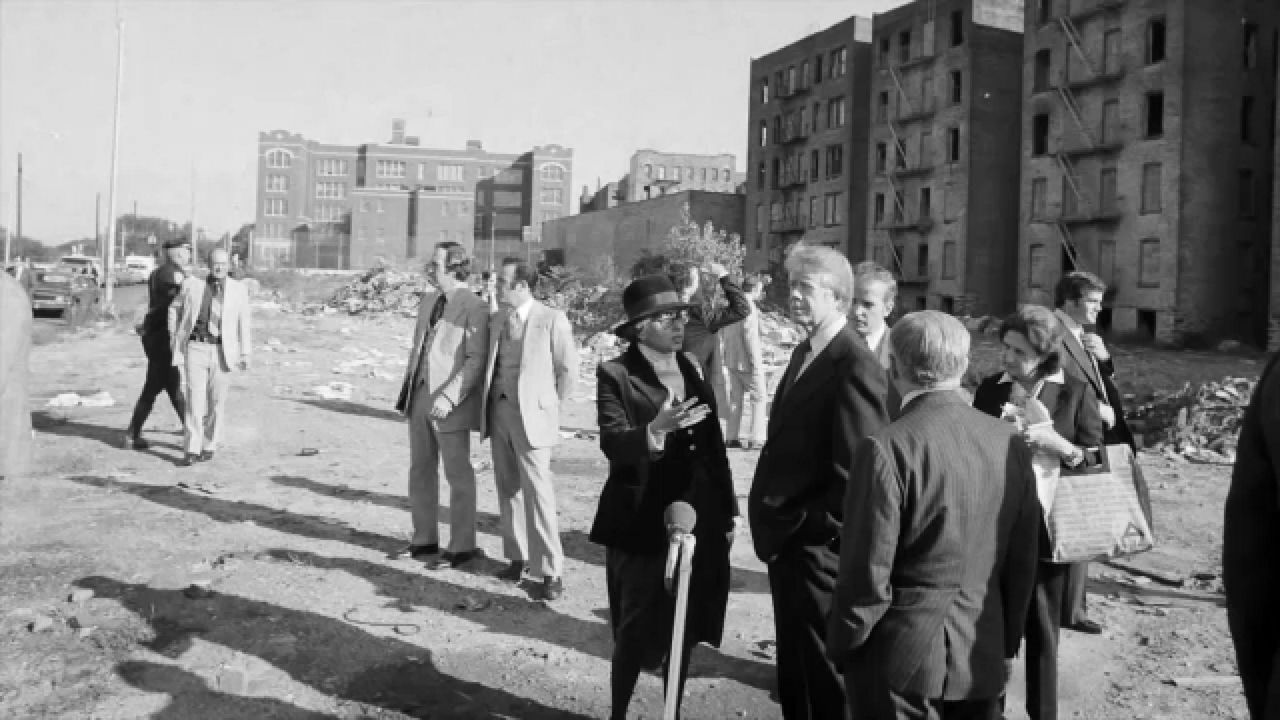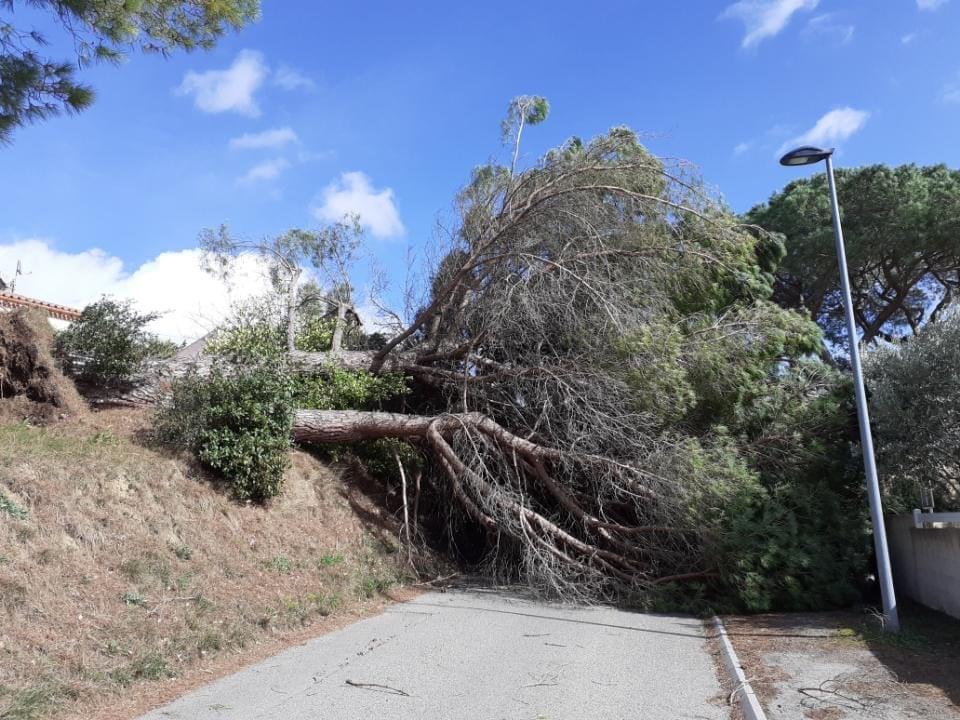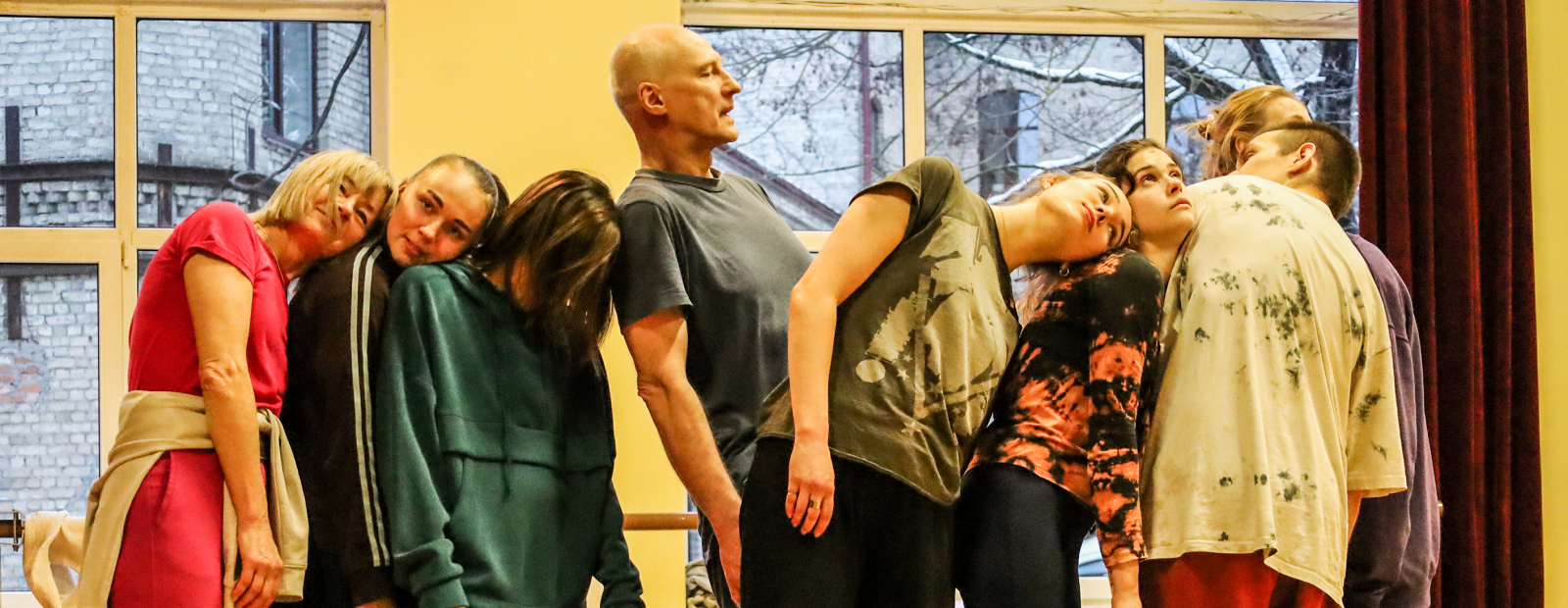It’s hard to believe that this quiet street of family homes, some with solar panels, was once a symbol of urban decay, the place where a United States president promised a county’s recovery.
On Charlotte Street in October 1977, touring the South Bronx with then-Mayor Abe Beame, President Jimmy Carter saw not only devastation, but also a community determined to save their neighborhoods.
“He committed to investing more than two million dollars to help us rebuild The Bronx. The Bronx is different today thanks to those efforts by Jimmy Carter,” Rivera says. “Jimmy Carter came here and he saw all this” (Jimmy Carter came and saw all this.)
José Rivera, a former assemblyman, was a union leader at the time and later began a long career in the City Council and the State Assembly.
He was on Charlotte Street when three years later Carter’s Republican rival, Ronald Reagan, made the same visit.
Charlotte and Mindford streets in the Bronx in 1977
“I can’t do a damn thing for you if I don’t get elected!, (“I can not do nothing for you if they don’t elect me…)”, the former president yelled at one of the people present there.”
“He raised the hope of the Latino, American and African-American people in those times to the Bronx,” adds Rivera.
Marlene Cintrón, who was born and raised in The Bronx, remembers those visits from Carter and Reagan.
He then spent decades working with Bronx elected officials, including Robert Garcia, who then represented the South Bronx in Congress.
“It was an overdose of hope and pride, being Latina, living in such a poor place, but at the same time having a president on top of a mountain of cement, of needles, saying ‘we are going to help them,’ says Marlene Cintrón , Regional Administrator, Small Business Administration.
Charlotte Street became a required pilgrimage for elected officials and political candidates.
President Bill Clinton went several times, including once to support Fernando Ferrer’s mayoral candidacy.
Rafael Salamanca, who currently represents this district on the Council, sees the result as a model to follow:
“They built houses for families, but they not only built houses for families, but for families in our communities, low-income, who had an opportunity to save their money, buy those houses, and until now they are living there or they passed on that house. to their children”, says the councilor.


